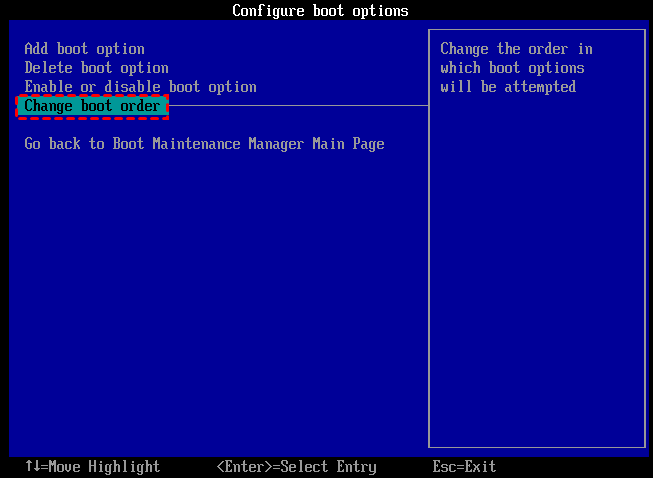How to Fix Error DIRTY_NOWRITE_PAGES_CONGESTION 0x000000FD?
This tutorial will help you fix DIRTY_NOWRITE_PAGES_CONGESTION 0x000000FD error. Now, check your disk and fix the error with our simple guide.
Why does the 0x000000FD DIRTY_NOWRITE_PAGES_CONGESTION Error occur?
The 0x000000FD DIRTY_NOWRITE_PAGES_CONGESTION is a Blue Screen of Death (BSOD) error in Windows. It usually happens when the system runs out of free memory pages that are needed to perform basic tasks. In simple terms, Windows is trying to manage memory, but it can’t keep up—especially when it can’t write certain memory pages (called “dirty pages”) to the hard drive.
This problem often points to memory or driver issues, but it can also be triggered by other system-level problems. Below is a table that summarizes the most common causes of this error:
| Cause | Explanation |
|---|---|
| Driver Problems | Faulty or incompatible drivers (especially storage or memory drivers) may block memory operations. |
| Windows Update Conflicts | A recent Windows update may not work well with your existing drivers. |
| Corrupted System Files | Damaged or missing system files can interrupt memory management. |
| External Hardware Issues | USB devices or other hardware can interfere with system stability. |
| Disk Errors or Bad Sectors | Problems with your hard drive may prevent memory pages from being saved properly. |
| Low System Resources | If the system is overloaded or running out of RAM, it can’t manage memory effectively. |
In the next section, you will get 4 fixes to solve the problem.
How to fix DIRTY_NOWRITE_PAGES_CONGESTION Error?
If your computer can’t boot, you can try starting Windows in Safe Mode to continue with troubleshooting. If you're not sure how to boot into Safe Mode, please click to get the method.
Fix 1. Remove External Hardware and Restart
Problems with external devices can sometimes lead to the 0x000000FD blue screen error or the boot selection failed because a required device is inaccessible. If you think this might be the cause on your computer, try removing any connected hardware and restarting your system. Here’s how to do it:
Step 1. Turn off your computer completely. Unplug all external devices (such as USB drives, printers, or external hard drives).
Step 2. Turn your computer back on with nothing connected. See if the error still appears. If it doesn't, reconnect each device one at a time to identify which one is causing the issue.
Fix 2. Uninstall Recent Windows Updates
At times, the DIRTY_NOWRITE_PAGES_CONGESTION blue screen error can be triggered by recently installed Windows updates that conflict with your current drivers. If you suspect this is the cause, removing those updates might help fix the problem. Here's how to uninstall recent Windows updates:
Step 1. Open the Settings application and then navigate to Update & Security > Windows Update.
Step 2. Choose View update history in the right panel and then click Uninstall updates.
Step 3. Right-click the latest update that probably caused the issue and then choose Uninstall.
Step 4. Reboot your computer and then check if the error is fixed.
Fix 3. Check your disk errors
Disk errors or damaged sectors can also trigger the 0x000000FD DIRTY_NOWRITE_PAGES_CONGESTION blue screen error. These issues can disrupt how your system reads and writes data, which may lead to serious memory management problems. To fix this, you should scan your hard drive for errors and repair any problems found. A useful tool for this task is AOMEI Partition Assistant. It provides two helpful features:
Check Partition – This scans your drive for file system errors to ensure the integrity of your data.
Disk Surface Test – This checks whether the disk has bad sectors and marks them so they won’t be used again.
If you encounter DIRTY_NOWRITE_PAGES_CONGESTION 0x000000FD and can't boot, you can follow the guide to create a bootable media and fix it. Here we take the Check Partition feature as an example.
The Best Windows Disk Partition Manager and PC Optimizer
Step 1. Install and run this tool. Click "Tools"> “Make Bootable Media” and click “Next”.
Step 2. On this page, choose “USB Boot Device” and select your USB drive. Then, click “Proceed”.
Step 3. Click “Yes” to continue. When the process completes, click “Finish”.
In only 3 steps, you can create a Windows repair USB, and then you can use it to solve PC problems.
Step 1. After you boot from repair USB on the target PC, it will display to you the basic situation of your hard drives. Select the partition that you want to check for, right-click it, select Advanced -> Check Partition.
Step 2. It will pop up a small window that you can select the way of checking errors to perform. Choose one according to your needs and click OK. It will proceed immediately.
Fix 4. Upgrade to a new disk
If the DIRTY_NOWRITE_PAGES_CONGESTION 0x000000FD blue screen error is caused by disk damage, bad sectors, or hardware failure, the most effective and permanent solution is to replace the faulty disk. Doing so not only helps prevent future system crashes and potential data loss but also resolves any issues that may have been caused by the corrupted drive.
If your current hard drive or SSD has bad sectors but is still accessible, AOMEI Partition Assistant offers a reliable solution with its “sector-by-sector clone” feature. This function allows you to clone an entire disk, even one with bad sectors, to a new, healthy drive—minimizing the risk of data loss and system crashes.
| Feature | Description |
|---|---|
| 🔎 Broad Compatibility | Works with Windows 11, 10, 8, and 7. |
| 🔁 Multiple Clone Options | Supports partition clone, entire disk clone, and system clone. |
| ⚙️ Performance Optimization | Offers 4K alignment after cloning to boost read/write speeds, especially on SSDs. |
| 👶 User-Friendly | Designed for all users—beginners can easily follow the on-screen instructions. |
| 🔧 Repair & Maintenance Tools | Includes functions like Boot Repair, Make Bootable Media, and Free Up Space options. |
This tool not only helps you clone a damaged drive, but also improves performance and ensures system stability. With features like partition alignment and bad sector detection, it offers a complete and practical solution. Next, let’s go over the step-by-step process to clone a disk with bad sectors using AOMEI Partition Assistant.
The Best Windows Disk Partition Manager and PC Optimizer
Step 1. Open the installed AOMEI Partition Assistant, click "Clone" in the main interface, and select "Clone Disk".
Step 2. Choose the hard disk that you need to clone as the source disk like SSD and click "Next".
Step 3. Select the destination disk to store the data on the source disk, and then click "Next".
Step 4. Then, you can check the source and destination disk in the next window choose "Sector to Sector clone", and click the "Confirm" button to continue if there is no problem.
Here, you can also click the "Settings" button to adjust the partition size on the destination disk or tick "4k alignment" to Optimize the performance of SSD if the target disk is an SSD drive.
Tip: If you want to clone Windows to a smaller drive, the "Clone without resizing partitions" button will be greyed out. Then, a Note about how to boot OS from the destination disk will pop up. Read and keep it in mind.
Step 5. After returning to the main interface, check the pending operation and click "Apply" and "Proceed" to commit the operation.
When the process is over, you can use the new hard drive to replace the old hard drive. If you keep both drives on your computer, you probably need to enter BIOS Settings to change boot drive.
Your computer can be booted from the destination disk after cloning the system disk. You just need to enter BIOS to set it as the prior boot device.
‼️ Set the new drive as the first boot drive
Step 1. Restart the computer, when you see the first screen, press the functional key (F2, F3, F4, F5, ESC) to enter "BIOS Setup".
Step 2. Select "Change boot order", and change the cloned hard drive to the top of the listed drives.
Step 3. Press “F10” to save and leave. If the cloned hard drive won't boot, you can check if the boot mode (BIOS and UEFI) and the boot connection are correct.
Conclusion
The 0x000000FD DIRTY_NOWRITE_PAGES_CONGESTION error is often linked to memory management issues, outdated drivers, hardware problems, or disk errors. Fortunately, several practical solutions—such as removing external devices, uninstalling recent updates, checking for disk errors, or upgrading your drive—can help resolve the problem. Tools like AOMEI Partition Assistant make the repair or cloning process easier and more efficient, ensuring better system stability and performance.



